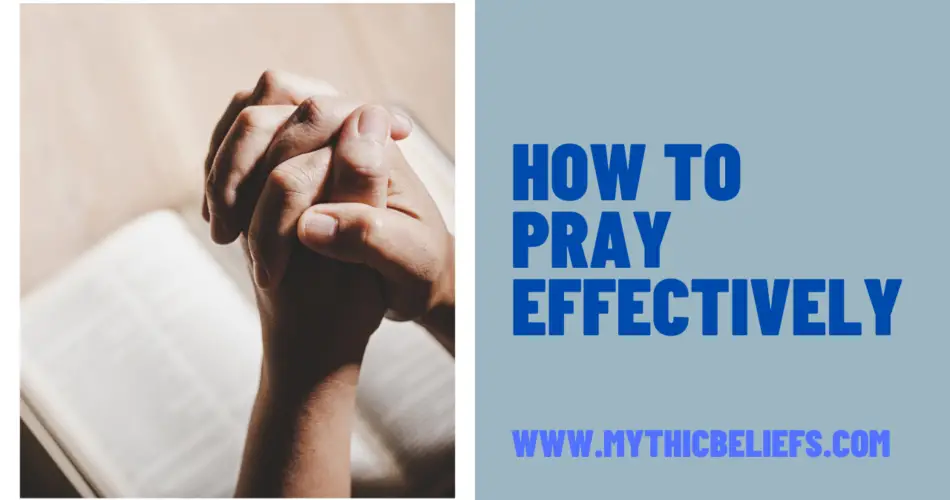Prayer isn’t just about saying the right words—it’s about connection. It’s about speaking from the heart, finding peace, and trusting that you’re being heard. Whether you pray to God, the universe, or simply to your inner self, an effective prayer isn’t measured by its length or eloquence. It’s measured by sincerity.
I used to think I had to pray a certain way—eyes closed, hands folded, voice soft and reverent. But the more I prayed, the more I realized it’s not about following a fixed path or formula. Some of my most powerful prayers have been whispered in frustration, scribbled in a journal, or simply thought in silence while sipping my morning coffee.
So, how do you pray effectively? Let’s break it down in a way that’s simple, personal, and—most importantly—real.
What Are the 5 Elements of Effective Prayer?
If you’re looking for a framework to guide your prayers, here are five key elements that can help make them more meaningful:
1. Sincerity
Forget fancy words or trying to sound “holy.” The most effective prayers come straight from the heart. Whether you’re feeling grateful, worried, or even a little lost, be honest. A simple, “God, I don’t know what to do right now, but I trust You,” can be more powerful than a long, rehearsed speech.
2. Gratitude
Before asking for anything, take a moment to acknowledge what you already have. Gratitude shifts your perspective and reminds you of the good in your life, even in tough times. Start with something small: “Thank you for today. Thank you for this moment.”
3. Faith
Effective prayer isn’t just about asking—it’s about trusting. You might not see answers right away (or in the way you expect), but believing that your prayers matter changes everything.
4. Humility
It’s okay to admit you don’t have all the answers. Prayer is a moment to let go of control, to surrender your worries, and to acknowledge that there’s something bigger than yourself at work.
5. Consistency
Just like any relationship, communication strengthens connection. You don’t have to pray perfectly—just pray regularly. Make it a habit, whether it’s in the morning, before bed, or in the middle of a chaotic day when you need a moment of calm.
What Is the Correct Way of Praying?
Here’s the short answer: there’s no single “correct” way to pray. Prayer is personal, and the way you connect might be completely different from someone else. But if you’re looking for a general structure, here’s a simple guide:
- Start by addressing God (or whatever higher power you believe in). You can say, “Dear God,” or just speak naturally, like you’re talking to a close friend.
- Express gratitude. Thank Him for the good in your life, even if it’s just for the breath in your lungs.
- Share your heart. Whether it’s a request for guidance, strength, or peace, speak openly. If you’re struggling, say so. If you’re celebrating, share your joy.
- Listen. Prayer isn’t just about talking—it’s about being still, reflecting, and making space for answers to come in unexpected ways.
- End with trust. Whether you say “Amen,” “So be it,” or simply sit in silence for a moment, close your prayer knowing that you’ve been heard.
What Is the Most Powerful Way to Pray?
The most powerful prayers aren’t necessarily the longest or the most poetic. They’re the ones that come from deep within—the ones spoken in faith, in desperation, in gratitude, in surrender.
Some of the most powerful ways to pray include:
1. Praying with Scripture
If you believe in the Bible, incorporating scripture into your prayers can bring comfort and reassurance. Verses like “Be still, and know that I am God” (Psalm 46:10) remind us to trust, even in uncertainty.
2. Silent Prayer
Not all prayers need words. Sometimes, the most profound moments come in silence—just sitting in stillness, breathing deeply, and opening your heart.
3. Writing Your Prayers
Journaling your prayers can help you process emotions and track your spiritual growth. It’s also a great way to look back and see how prayers have been answered over time.
4. Praying Through Action
Sometimes, prayer isn’t just about words—it’s about what you do. Acts of kindness, helping others, and even just being present for someone in need can be a form of prayer.
Making Prayer a Daily Habit
We live in a world that moves fast—notifications, endless to-do lists, and news that never stops. But prayer? It’s an anchor. It slows us down. It reminds us that we’re not alone.
If you’re trying to pray more effectively, start small. Set a reminder, create a space for prayer (a cozy corner, a journal, even just a few minutes of stillness), and don’t overcomplicate it.
Prayer doesn’t have to be a grand event. It can be as simple as whispering “Thank you” as you wake up or saying “I need strength” before walking into a tough situation.
Conclusion: Just Start
At the end of the day, the most effective prayer is the one you actually pray. Don’t wait until you feel “ready.” Just start. Whether it’s a few words or a deep conversation, your prayers matter.
So, what’s on your heart today? Take a deep breath, find a quiet moment, and start the conversation.
I’d love to hear from you—how do you pray? Have you found a method that works best for you? Drop a comment below and let’s talk about it!
